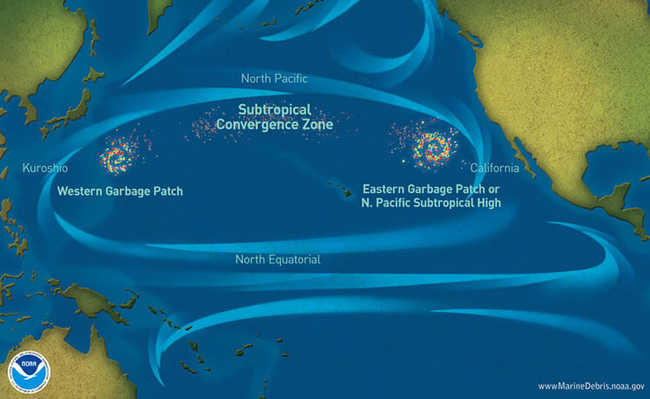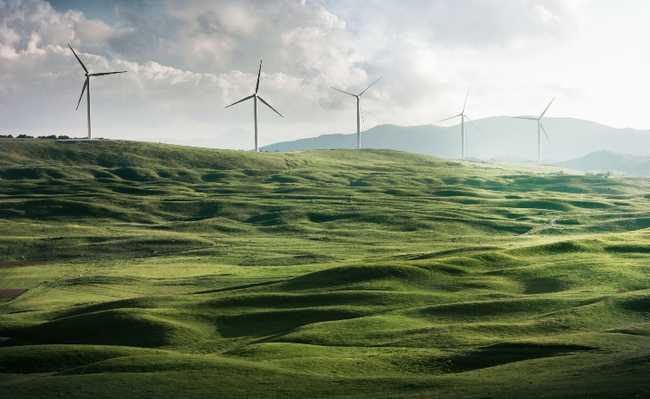Deforestation of tropical forests affects worldwide rainfall
The Amazon takes moisture to other regions of Brazil and even to other continents

Rain cloud over a stretch of forest in the state of Amazonas. Image: Rogerio Assis
If 60% of the Amazon is Brazilian and 40% from eight other countries, why should the world be concerned about the fate of the largest rainforest on the planet? It would not be for the production of oxygen, a myth that always resurfaces when fires gain strength and the rate of deforestation rises in the region, as happened this year, putting the supposed “lungs of the world” at risk. During the day, plants photosynthesize and transform solar energy into chemicals, basically carbohydrates (sugars) vital for their survival.
In this process, they absorb water vapor and carbon dioxide (CO2), the most important greenhouse gas, and release oxygen. But at night, when they don't carry out photosynthesis, and just breathe, they consume oxygen and exhale CO2. At the end of the day, after all, there is a technical tie between the amount of oxygen consumed and released. In fact, photosynthesis of all the vegetation on the planet releases an amount of oxygen that practically does not alter the atmospheric concentration of this gas.
In addition to holding about 15% of all the planet's biodiversity, a reason in itself sufficient to preserve it, the Amazon plays several fundamental roles for atmospheric chemistry at a regional, continental and even global level. “The forest is a great source of water vapor not only for the North region but also for the Center-South region of the country and the La Plata basin”, comments physicist Paulo Artaxo, from the Physics Institute of the University of São Paulo ( IF-USP). "It works strongly to regulate the climate at different scales, including remotely."
If I use a metaphor, the Amazon would be the planet's air conditioner, spreading freshness and humidity — in other words, rain — over itself and over other parts of the globe. It is not a force of expression for the English language to call the Amazon and other tropical rainforests rainforests, literally rain forests . In these parts of the planet, there are dense and exuberant vegetation cover because it rains almost continuously and a lot, between 2 thousand and 4,500 millimeters (mm) per year.
The moisture that reaches the immense Amazon basin is brought by winds that blow from the tropical Atlantic Ocean towards the mainland. This water vapor generates rain over the forest. At first, vegetation and soil absorb water. In a second, the phenomenon known as evapotranspiration occurs: part of the rain evaporates from the soil and the plants transpire. These actions return a large fraction of the initial moisture to the atmosphere, which produces more rainfall over the forest. This interaction generates a very efficient perennial water reuse cycle.
Therefore, researchers say that the Amazon processes part of its own rain. But not all of this water vapor remains parked over the forest. When returned to the atmosphere, part of this moisture generates air currents that transport rain to the south-central part of the continent. These are the famous flying rivers. Every day, these aerial rivers transport around 20 billion tons of water, 3 billion tons more than the Amazon River, the largest volume of water in the world, daily dumps into the Atlantic.
Deforestation and possible fragmentation of the tropical forest may compromise its ability to send water vapor to Central Brazil and the South of the continent. “The Amazon is a predominantly flat and continuous area, which, in climate models, we consider as a block, an entity in itself”, explains the climatologist José Marengo, head of the Research and Development sector at the National Center for Monitoring and Disaster Alerts Naturals (Cemaden), agency of the Ministry of Science, Technology, Innovations and Communications (MCTIC).
“Significant changes in its vegetation cover alter the atmospheric circulation system and may have repercussions on the rainfall regime in distant places. They can give rise to extreme events, such as the decrease in total rainfall or its concentration in a few days.” Outside the North region, the humidifying effect of the Amazon is felt most evidently in the Southeast, in the La Plata Basin and in the Center-West, whose agricultural activities benefit from a reduction in temperature caused by mild winds from the forest.
On August 19 of this year, São Paulo residents had a sample of the connections at a distance that interconnect the Amazonian atmosphere with the climate of the city of São Paulo. Around 3pm, in the middle of the afternoon, a winter storm darkened the sky of the metropolis. The day that turns into night draws attention, but it is not a rare phenomenon. Unusual was the black rain that fell during the storm. Analyzes carried out at USP's Chemistry Institute found in rainwater the organic compound retentive, of the class of polycyclic aromatic hydrocarbons (HPAs), formed only when biomass, such as trees, is burned.
As the date of the black rain in São Paulo coincided with a peak of fires in the North region and in neighboring countries, the retention must have been produced by the forest fires that led the Amazon to be front-page news in the world that month. The smoke from the fires was transported to the capital of São Paulo, where it joined the rain clouds.
In recent years, some studies have tried to measure the impact of the disappearance or drastic reduction of the area of large tropical forests on the climate in different parts of the planet and its implications for agriculture. An article published in 2015 in the scientific journal Nature Climate Change compiled and analyzed data from more than 20 climate modeling studies and scientific articles dealing with the repercussions of total or partial deforestation of the three large tropical forests: the Amazon, the largest of them, the Central Africa, in the Congo basin, and that of Southeast Asia.
The first two form continuous blocks of vegetation, but the Amazon is 70% larger and wetter than the African forests, which also suffered major fires this year. Most of Southeast Asia's forests are spread across islands in the region, such as Indonesia and Malaysia. The Amazon is 2.5 times larger than the forests in this region.
Infographic and illustration: Alexandre Affonso/Revista Fapesp
In addition to locally stimulating droughts and temperature spikes, complete deforestation of tropical forests would warm the planet's climate by an additional 0.7°C, close to the level of global warming currently experienced by the increase in the greenhouse effect since the Industrial Revolution. The biggest repercussions of complete deforestation, however, would be on the rainfall regime. “Tropical deforestation would cause a double blow to the climate and to farmers”, said, in the study's publicity material, the environmental sciences professor Deborah Lawrence, from the University of Virginia, in the United States, the main author of the study.
“Removing forests would alter moisture and airflow, leading to changes that would be equally dangerous and would happen immediately. The impacts would go beyond the tropics. The UK and Hawaii could see an increase in rainfall, while the US Midwest and southern France a decline.” The cultivation of grains such as corn, wheat, barley and soybeans is widespread in this North American region. In southern France, in addition to grains, there is an expressive production of wine and lavender.
In October of this year, at a meeting at Princeton University, in the United States, to discuss the importance of the Amazon for the planet, a similar climate modeling work was released. In the study, coordinated by ecologist Stephen Pacala and climatologist Elena Shevliakova, both from Princeton, they simulated what the consequences would be if the entire Amazon rainforest turned to pasture. On a global scale, the world would be 0.25°C warmer.
In Brazil, rainfall would be reduced by a quarter and the Amazon itself would be 2.5 ºC warmer. The scenario of total disappearance of tropical forests is very radical and is unlikely to materialize. However, works such as Lawrence's indicate that deforestation between 30% and 50% would be enough to produce strong global impacts, in addition to the savannization of part of the forest.
The threat to the Amazon would not come only from the action of chainsaws or fire from the fires. Recent research suggests that global warming itself is behind a mysterious increase in the mortality of certain types of trees in areas of dense forest, in well-preserved areas, where theoretically the resilience of vegetation should be high.
Published in November last year in the scientific journal Global Change Biology, the study analyzed the diameter of the growth rings of individual trees in 106 stretches of the forest and concluded that those not adapted to stress conditions, such as prolonged drought and higher temperatures, would be perishing more than the others.
The species that are more apt to grow in humid environments would be losing space to those that develop more easily in a dry climate. “Trees adapted to moisture die, open small clearings in the middle of the forest and are replaced by faster-growing species such as embaúba”, explains Brazilian ecologist Adriane Esquivel-Muelbert, from the University of Leeds, UK, lead author from work. "Global warming is changing the biodiversity of the species that make up the forest."
These stretches of the Amazon have been monitored for 30 years by researchers from Brazil and abroad within the project Amazon Forest Inventory Network (Rainfor). The problem with this replacement is that the new dominant species grow fast, but have an ephemeral life and remove less carbon from the atmosphere, one of the most important roles of the Amazon, along with its effect of spreading moisture.
Projects
1. Interannual variation in the balance of greenhouse gases in the Amazon Basin and its controls in a world under warming and climate change – CARBAM: long-term study of the carbon balance in the Amazon (nº 16/02018-2); Modality Thematic Project; FAPESP Research Program on Global Climate Change; Responsible researcher Luciana Gatti (Inpe); Investment R$ 3,592,308.47
2. AmazonFace/ME: Amazon-Face Modeling-Experiment Integration Project – the role of biodiversity and climate feedbacks (nº 15/02537-7); Young Researcher Program; Lead researcher David Montenegro Lapola (Unicamp); Investment R$ 464,253.22.
Scientific articles
FLEISCHER, K. et al. Amazon forest response to CO2 fertilization dependent on plant phosphorus acquisition. Nature Geoscience. online. 5 Aug. 2019.
ESPINOZA, J.C. et al. North–South contrasting changes in Amazon wet-day and dry-day frequency and related atmospheric features (1981–2017). Climate Dynamics. v. 52, no. 9-10, p. 5413-30. mai. 2019.
MARENGO, J.A. et al. Changes in Climate and Land Use Over the Amazon Region: Current and Future Variability and Trends. Frontiers in Earth Sciences. December 21 2018
LOVEJOY, T.E and NOBLE, C. Amazon Tipping Point. Science Advances. 21 Feb 2018
GATTI, L.V. et al. Drought sensitivity of Amazonian carbon balance revealed by atmospheric measurements. Nature. v. 506, no. 7486, p. 76–80. Feb 6, 2014.










